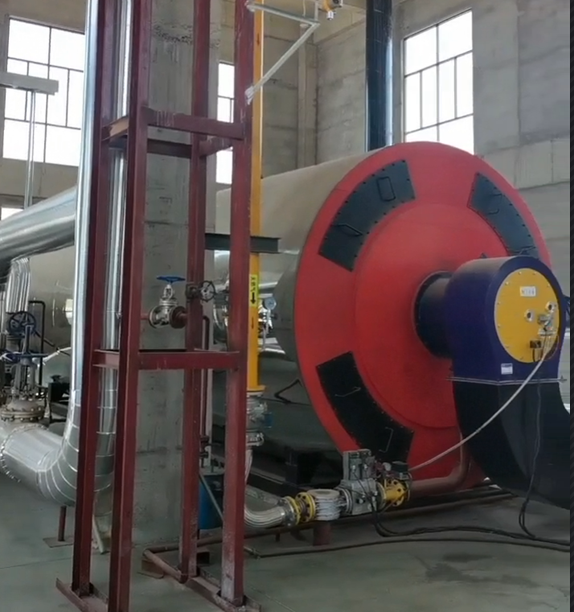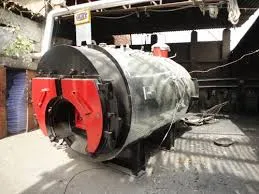
Feb . 06, 2025 04:41 Back to list
biomass fired steam boiler
Building a boiler for a steam engine requires a blend of expertise, precision, and an understanding of thermodynamics. This complex process transforms heat energy into mechanical energy, playing a pivotal role in various industrial applications. Here’s a detailed guide emphasizing experience, expertise, authoritativeness, and trustworthiness to ensure you succeed in this intricate endeavor.
Safety and Testing Upon constructing the boiler, rigorous testing is essential. Hydrostatic testing, where the boiler is filled with water and pressurized beyond its design limits, ensures there are no leaks or weaknesses. Implementing safety valves and pressure gauges is non-negotiable, as they provide real-time monitoring of internal conditions, mitigating risks of overpressure. Regular maintenance schedules must be established. This includes periodic inspections, cleaning of the tube surfaces to prevent scaling, and ensuring the safety mechanisms are fully operational. Certification and Compliance After construction and testing, having your boiler certified by a recognized authority ensures it meets all regulatory and safety standards. Certification not only legitimizes the boiler's operation but also boosts trustworthiness, especially in industries where reliability is critical. Operational Knowledge Operating a boiler requires understanding the intricacies of steam generation and the specific needs of the connected engine. Training sessions, ideally led by experts, should focus on operational procedures, emergency responses, and optimization techniques for energy conservation. Conclusion Building a boiler for a steam engine is not merely a technical task but a pursuit requiring in-depth knowledge and adherence to stringent safety and quality protocols. With carefully selected materials, precise design and construction, and diligent testing and operation, you can create a boiler that is both efficient and reliable. Always prioritize safety and seek expertise when necessary, ensuring the entire process aligns with best practices in boiler engineering.


Safety and Testing Upon constructing the boiler, rigorous testing is essential. Hydrostatic testing, where the boiler is filled with water and pressurized beyond its design limits, ensures there are no leaks or weaknesses. Implementing safety valves and pressure gauges is non-negotiable, as they provide real-time monitoring of internal conditions, mitigating risks of overpressure. Regular maintenance schedules must be established. This includes periodic inspections, cleaning of the tube surfaces to prevent scaling, and ensuring the safety mechanisms are fully operational. Certification and Compliance After construction and testing, having your boiler certified by a recognized authority ensures it meets all regulatory and safety standards. Certification not only legitimizes the boiler's operation but also boosts trustworthiness, especially in industries where reliability is critical. Operational Knowledge Operating a boiler requires understanding the intricacies of steam generation and the specific needs of the connected engine. Training sessions, ideally led by experts, should focus on operational procedures, emergency responses, and optimization techniques for energy conservation. Conclusion Building a boiler for a steam engine is not merely a technical task but a pursuit requiring in-depth knowledge and adherence to stringent safety and quality protocols. With carefully selected materials, precise design and construction, and diligent testing and operation, you can create a boiler that is both efficient and reliable. Always prioritize safety and seek expertise when necessary, ensuring the entire process aligns with best practices in boiler engineering.
Share
Latest News
-
High Efficiency Gas Fired Thermal Oil Boiler for Industrial Heating
NewsJul.29,2025
-
High-Efficiency Gas Fired Hot Water Boiler for Sale – Reliable & Affordable
NewsJul.29,2025
-
High Efficiency Biomass Fired Hot Water Boiler for Industrial and Commercial Use
NewsJul.29,2025
-
High-Efficiency Biomass Fired Hot Water Boiler for Industrial Use
NewsJul.28,2025
-
High Efficiency Coal Fired Hot Water Boiler for Reliable Heating
NewsJul.28,2025
-
High Efficiency Coal Fired Thermal Oil Boiler for Industrial Heating
NewsJul.26,2025
Related PRODUCTS
Copyright © 2025 HEBEI HONGZE BOILER MANUFACTURING CO., LTD. All Rights Reserved. Sitemap | Privacy Policy






















